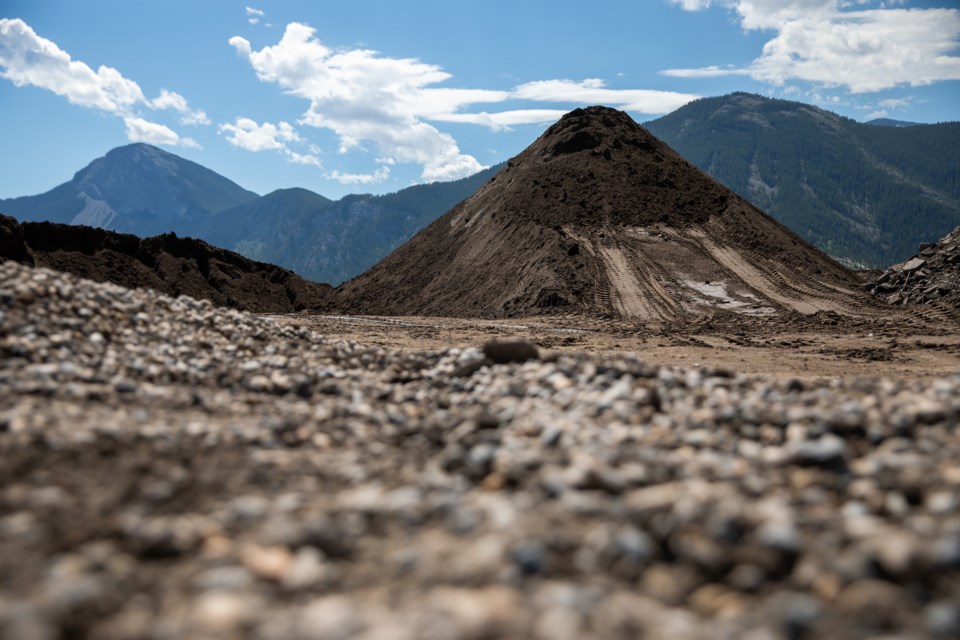EXSHAW – An energy from waste facility that would benefit southern Alberta municipalities and reduce greenhouse gas emissions is a step closer to reality.
The Southern Alberta Energy from Waste Association (SAEWA) authorized the project engineers from HDR to solicit expressions of interest for a potential energy from waste facility in the County of Newell.
Locally, if the energy from waste facility is created, it would significantly increase the lifespan of the Francis Cooke Landfill from its already more than 40 years remaining.
“If we have an area waste facility, the lifespan of the Francis Cooke landfill could be indefinite because we’re no longer burying waste in the ground. We’re turning it into energy,” said Paul Ryan, the chair of the Bow Valley Waste Management Commission and vice chair of SAEWA.
The ultimate goal is to reduce the carbon footprint that comes with hauling garbage significant distances, which saw engineers analyzing the centre of mass haul. The expression of interest is intended to go out in July to seek industry partners to work with and return with a shortlist of possible partners prior to the October municipal election.
“The expression of interest should be completed prior to the next municipal election and go to procurement by the end of the fourth quarter in 2022,” Ryan said.
Ryan, who is the project lead for SAEWA, said the project has involved HDR – the project engineers – Oil and Gas Engineering, the University of Alberta and the Pembina Institute.
A 2020 report to SAEWA had a long list of 11 sites, but recommended the County of Newell or Vulcan County. Ryan said the 15 hectare-County of Newell site was already zoned for waste management, which would allow for a quicker transition in building the potential facility.
It also sits along the Trans-Canada Highway and is near major transmission lines that could be tied into the grid to create energy, he said.
“There’s a lot of interest in the industrial side because there’s a tremendous amount of capital sitting out there that is not going to work right now,” Ryan said. “I always equate the energy from waste facility like playing monopoly. Everyone wants Boardwalk and Park Place because it pays the highest revenue, but going around the board there’s four railways and those are utilities. You always land on one. … Investments in municipal utilities are a guaranteed return over time. It’s not fast money, but it’s safe money.”
An energy from waste facility would create a win-win scenario as the private sector company that is selected would have a steady supply of waste to create energy, while the municipalities would reduce greenhouse gases that come with transportation of waste and reduce the environmental hazards that come with burying garbage.
It would also have a long-term certainty in shipping costs for garbage, with it being in a centralized place. The facility would accept non-recycled materials.
For many municipalities, it’s common to ship waste to distant landfills or to the United States, which can have significant travel. In the Bow Valley, much of the waste created is shipped to the West Dried Meat Lake Regional Landill in Camrose County for an eight-hour round trip.
The policy is largely out of sight, out of mind, but ultimately does little for a positive environmental impact.
The County of Newell facility would be about six hours round trip, but also have the advantage of not burying waste.
Ryan said the findings from the Pembina Institute has greenhouse gas emissions being reduced by about 230,000 tonnes a year or seven million tonnes over the life of the project.
“If the SAEWA project is successful, we will be able to reduce that distance by 50 per cent for many municipalities and also have the ability for municipalities to have long-term budgeting for municipal works based on a dependent tipping fee at a facility that they actually have some control over," Ryan said.
“We can come up with a long-term dependable solution with predictable economic costs as well as environmental benefits.”
SAEWA was first established in 2009 with the aim of creating sustainable waste management practices to help become more efficient with resources and be environmentally impactful for the region.
The non-profit group has more than 60 municipalities in largely rural areas of southern Alberta.
The waste sector is largely seen as a negative, but vital aspect for municipalities.
While many are uncomfortable with simply burying garbage – particularly with potential environmental impacts – few people know what happens when the garbage truck removes the bin.
The idea of waste from energy is not new, but has been gaining traction across the globe as environmental concerns are pushed to the forefront.
The Durham York Energy Centre in Ontario was the last such facility built in Canada when it was finished in 2016. It converts about 150,000 tonnes of garbage into electricity, with roughly a tonne of garbage supplying enough electricity to a home for a year.
The facility was created as the region shipped most of its waste to Michigan – a common practice in Ontario – but when the state threatened to close its borders to garbage, it forced the region to think differently.
Legislative changes in 2020 to waste management in Ontario also make it highly unlikely a new landfill will be established, highlighting the risk of simply burying garbage. If a similar situation were to arise in Alberta, it could prove a critical planning concern on where municipal waste would go.
“It’s about removing our dependence on landfill and changing it to a beneficial use that generates energy,” Ryan said.
“If you think of a landfill where every tonne of material that goes into landfill produces about 0.75 tons of methane, and you convert that to the CO2 equivalents. Energy to waste facilities can reduce harmful emissions – a lot.”




